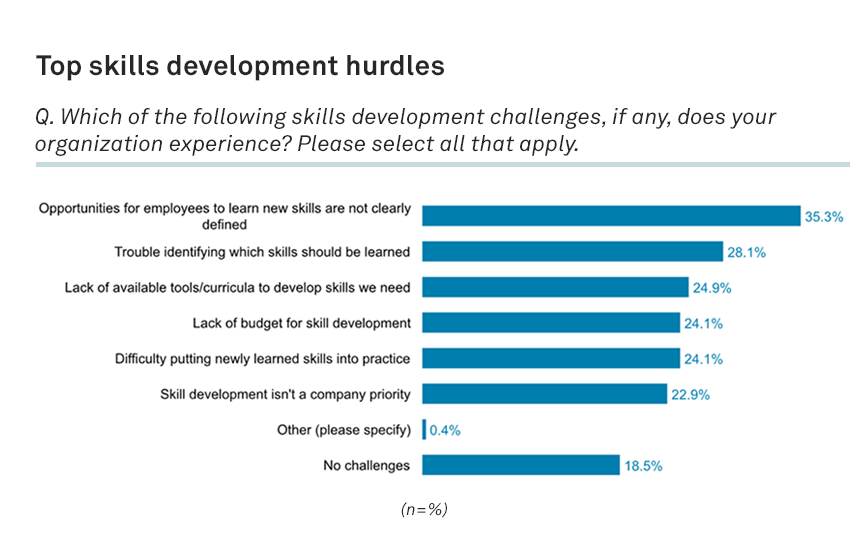
Datacenters require a skilled labor force on multiple levels: From their planning and design phases to construction and day-to-day operations, and even managerial roles like accounting, sales and human resources, these sites need workers with a range of skills to run smoothly. Finding workers with these types of expertise, however, is no easy task.
Datacenter providers often struggle to recruit and retain workers, especially for more technical roles. Providers often find that the pool of qualified candidates isn’t large enough. After workers are hired, providers are also faced with the additional burden of training and preparing their workers for the high operational standards required to maintain and operate a datacenter facility. The everchanging nature of the datacenter business is yet another major challenge, as providers struggle to upskill or reskill their employees.
The workforce as an industry priority
Respondents to a recent 451 Alliance survey (39%) ranked employee retention as their number one priority for 2023. In addition, employee hiring and wages ranked third as a top priority (34%). The two areas ranked higher than many other top industry concerns, including business expansion, product development, supply chain management, digital transformation and energy transition. In fact, when asked the main reason why they experience difficulty in hiring or rehiring employees, respondents cited high competition for workers (60%) and applicants lacking the required skills (45%) as the top two reasons.
A limited skills pool for datacenters
Datacenter operations require a specific set of skills that are difficult to find even in highly educated workers. A facility’s top priority is to run smoothly without any downtime; to do so, part of the workforce must be familiar with the entire datacenter ecosystem, from power and cooling to servers and backup options in case of an outage. Not finding these skills in a worker pool is the textbook definition of a “skills gap,” a mismatch between the set of skills an operator is seeking and the ones in its pool of potential employees.
Industry leaders appear to be aware of the issue. In a separate 451 Alliance survey, one-third of survey respondents (35%) reported a small pool of qualified candidates as the number one challenge faced by team managers during the candidate evaluation process. In the datacenter industry, it is common to find qualified applicants with expertise in one or two aspects of a datacenter, but much rarer to find someone with the all-around expertise required to run a complex datacenter ecosystem. Training and upskilling existing employees is also not as easy as it might sound.
Moving goalposts
One’s first instinct might be to think that if an organization has a difficult time finding workers with the skills it needs to operate, it could just hire and train employees to obtain the required skillset, gradually upskilling them from junior to more senior-level positions as they become familiar with the business.
The datacenter industry, however, is prone to a “moving goalposts” dynamic: Even though providers might know what skills to pass on to their employees now, the industry sees a constant influx of new operational standards and technologies that are difficult to keep up with. Many providers find it difficult to stay current and prepared for new technologies, struggling to determine which skills to focus on when training employees.
This is an issue for the broader technology industry as well. A 451 Alliance survey focused on the employee lifecycle found that more than one-third of organizations (35%) saw unclear opportunities for employees to learn new skills as the main challenge preventing skills development. Additionally, 28% noted that they had trouble identifying which skills should be learned. Lack of tools, curricula and budget for skills development were also challenges encountered by about one-quarter of respondents.

Hurdles for the future
Nowadays, skills gaps are affecting the technology industry across the board. In the case of datacenter providers, it can be particularly difficult as the business calls for operational standards requiring skills that can rarely be found in a typical candidate pool. Datacenter operators are increasingly affected by the issue, with some even describing it as a labor shortage, and many have pursued initiatives to train workers themselves.
More so than some other technology-centric industries, datacenters require a physical presence of workers to prevent any downtime and address any issues that might arise. The heart of the datacenter model might not be the facility itself, but the people running it after all.
Want insights on datacenter trends delivered to your inbox? Join the 451 Alliance.

